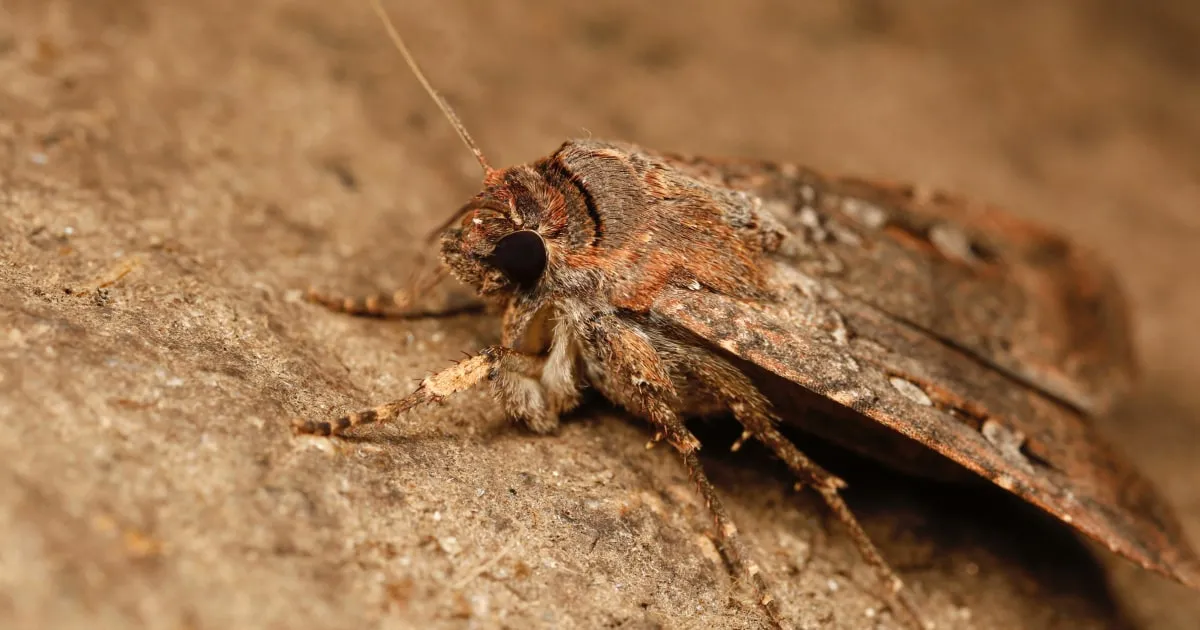
Each spring, billions of bogong moths take to the skies of southeast Australia in an impressive migration. These remarkable insects journey approximately 600 miles from the lowlands to the caves nestled within the Australian Alps, seeking refuge from the heat. Emerging from their larval stage, these 1-inch-long moths possess the innate ability to navigate to these caves, yet the precise mechanisms underlying their navigation remained a mystery until now.
In a groundbreaking study published in the scientific journal Nature on Wednesday, researchers have disclosed that bogong moths utilize the starry sky as a guide during their long journey. “The significant discovery here is that a tiny creature like a moth, equipped with a small brain and a limited nervous system, can interpret the celestial night sky to determine its flight direction,” stated Eric Warrant, a professor of zoology at Lund University in Sweden and co-author of the study.
While several bird species and humans have demonstrated the ability to navigate using stars, the bogong moth is the first documented insect to employ stellar navigation over extensive distances. “As far as we know, the bogong moth is the only species that has shown the capability to navigate using the stars,” explained Andrea Adden, a postdoctoral researcher at The Francis Crick Institute in London and a contributor to the research.
The researchers set out to investigate the moths’ navigation by capturing wild bogong moths and placing them in a specialized “flight simulator.” This apparatus allowed the moths to flap their wings and turn freely while being suspended on a thin tungsten rod. “It can rotate freely,” said David Dreyer, a Lund University researcher and co-author of the study. “The moths can choose any direction they wish to fly.”
To eliminate the influence of the moths' internal magnetic compass, the researchers created a magnetic vacuum, allowing them to focus on the moths' other senses. They projected an adjustable image of the night sky onto the simulator. During testing, researchers found that when the sky was rotated, the moths adjusted their flight patterns accordingly. However, when a disrupted and randomized sky pattern was projected, the moths became lost. “The animals were completely disoriented,” Dreyer noted, which served as compelling evidence that the moths indeed rely on stars for navigation.
In further experiments, the researchers made a small incision into the moths’ brains, inserting a glass tube into a neuron to measure electrical impulses while displaying the star projection. They found that electrical impulses increased when specific angles of the sky were shown, while reactions diminished with a randomized sky pattern. Warrant remarked that the moths likely possess small pupils, enabling them to see only a few of the brightest stars. It is suspected that they may use the Milky Way as a navigational aid. “They probably perceive the Milky Way much more vividly than we do,” he added.
As the moths approach their alpine caves, Warrant suggests that they likely utilize their sense of smell to guide them. “They detect a compound that likely emanates from the cave—an odor compound that acts as an olfactory beacon,” he explained, noting that this smell resembles that of rotting meat. These moths, which have a lifespan of about a year, spend their summers dormant in the caves before returning to their origins.
Ken Lohmann, a professor in the biology department at the University of North Carolina and not involved in the research, praised the work as convincing and well-controlled. “What’s remarkable is how these moths can maintain their heading over long distances using a relatively small brain,” he stated, highlighting the ingenuity of natural selection. Unfortunately, bogong moths are currently endangered and were added to the International Union for Conservation of Nature's “red list” in 2021.
The findings from this research could play a crucial role in efforts to protect the declining bogong moth population. “The moth numbers have been declining dramatically in recent years, especially due to the drought and bushfires in Australia during 2020,” Adden mentioned. Understanding that these moths use vision as part of their navigation might inform conservation strategies, particularly concerning light pollution, which can trap moths in urban areas.